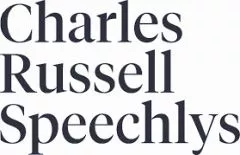The Chancellor announced in the Budget today that the end of the Liechtenstein Disclosure Facility (LDF) would be brought forward to the end of 2015, rather than 5 April 2016. Now is the time for UK resident or domiciled individuals with undeclared tax liabilities to decide whether to make use of the facility, particularly as whoever wins the election in May will no doubt have tax evasion on their agenda, and it is possible that the terms of the LDF could be amended to restrict its use, or even that the LDF could be closed to new applicants before the end of the year.
The LDF was introduced by HMRC in 2009 and has widely been recognised as a favourable disclosure option for individuals with undeclared UK tax liabilities, particularly those with historic inheritance tax liabilities. Significantly, there is no requirement for applicants to have held a Liechtenstein asset for a specified length of time prior to registering for the facility, provided they held an offshore asset as at 1 September 2009 and have a "substantial" link to Liechtenstein at the time of registration.
Key benefits of the LDF include:
- The taxpayer must disclose liabilities back to 6 April 1999, but any liabilities arising before that date can be disregarded. This compares favourably to the ordinary 20 year recovery period under statute.
- Penalties are limited to 10% of outstanding tax in the period 6 April 1999 to 5 April 2009, known as the LDF Period.
- It is possible for a single composite rate of tax at 40%, known as the "CRO", to be used to calculate tax liabilities during the LDF Period, rather than an individual's marginal tax rates. The CRO can effectively extinguish liabilities to certain taxes arising in that period, including inheritance tax. No other disclosure facilities have had this effect, and it is highly unlikely that any future facility will permit inheritance tax liabilities to be eliminated in this way.
Over the course of the facility, HMRC and the government of Liechtenstein have tightened up its terms, making it less easily accessible and in some cases reducing the benefits available to those who remain eligible to register.
When the facility was first introduced, there were no hard and fast rules regarding the value of an applicant's Liechtenstein "footprint" in order to establish the necessary "meaningful connection"; many people registered for the LDF having moved a nominal cash sum to a newly opened Liechtenstein account, the balance of which was used to settle the individual's tax liabilities once an agreement had been reached with HMRC. Unsurprisingly, the Liechtenstein government was dissatisfied with the long-term business prospects this behaviour offered, so passed an Ordinance on 10 July 2012 which specified the minimum connection with Liechtenstein an individual must have for a Liechtenstein financial intermediary to approve the connection and issue a "confirmation of relevance" certificate.
Generally, this will be 20% of the balance of the assets which are subject to the disclosure, held in Liechtenstein for a minimum of two years.
In August 2014, further restrictions were introduced, reducing the beneficial terms of the LDF in cases where:
- The relevant person enters the LDF to settle liabilities HMRC is already aware of;
- The issue being disclosed has already been subject to an "intervention" (i.e., investigation or enquiry) that started more than three months before the date of application (whether such "intervention" is ongoing or has been closed); or
- There is no substantial connection between the liabilities being disclosed and the offshore asset held by the relevant person as at 1 September 2009. This latter restriction was designed to ensure that the LDF is principally used by individuals who wish to disclose liabilities relating to an offshore asset, rather than, for example, domestic liabilities being disclosed by an individual who happened to have a small offshore bank account as at 1 September 2009.
However, notwithstanding the recent "tightening up" of the LDF terms, it continues to be a powerful tool for regularising liabilities, including in relation to Swiss accounts where the "Rubik" agreement may not have been effective to clean up all tax irregularities.
Within the next few years, information concerning accounts in a large number of jurisdictions will be available to HMRC and the UK government. If individuals or fiduciaries are concerned that the new reporting and exchange of information regimes will expose undeclared liabilities, it is still possible to use the LDF or one of the other disclosure possibilities to regularise affairs prior to information exchange taking effect. Given the Chancellor's latest announcement, we strongly recommend that individuals who are considering making a disclosure under the LDF take action now, before any further changes are announced.
The content of this article is intended to provide a general guide to the subject matter. Specialist advice should be sought about your specific circumstances.


